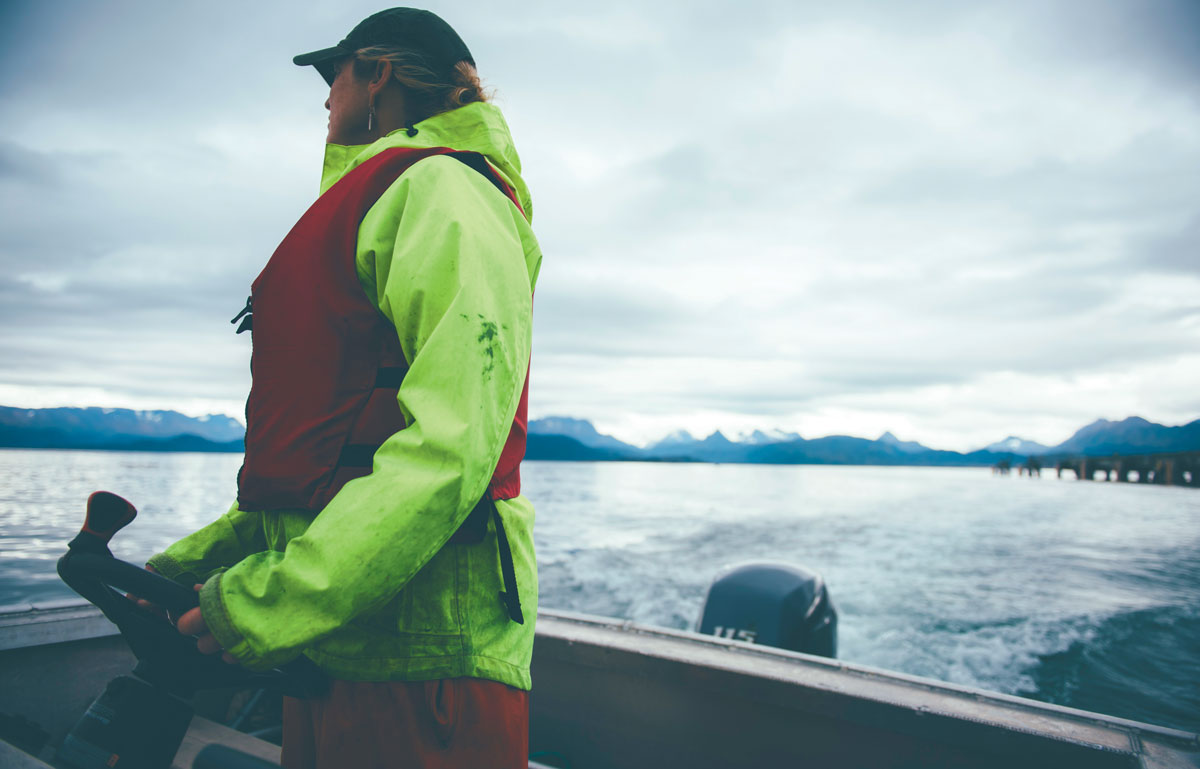A Future in Fish
Take a Roadtrip with the Alaska Young Fishermen’s Network
On the last and hottest day of our journey, nearly 3,500 miles from where we began in Anchorage, my well-traveled—and by now, wellfed—crew started to head, one by one, for the river. We wandered from the farm celebration, the air still steaming with the smell of boiled shrimp and deep-fried cracklins, and crept over a small levee to put our feet in the Mississippi. It didn’t surprise me that these northern fishermen naturally sought out the closest body of water, somewhere to cool off and point at big ships. We may hail from ports that span Alaska’s coastline, but at the end of the day we share a few simple affinities: water, boats, and fish.
We were just outside of New Orleans, our last stop on an ambitious tour that took 11 young Alaskan fishermen to three major cities for wildly different fish-focused events. Our first stop was Boston for the gargantuan Seafood Expo North America (better known as the Boston Seafood Show); then to Washington, D.C. for a discussion of national fisheries policies and lobbying; and finally we headed to the Gulf of Mexico, descending on New Orleans for Slow Fish 2016, a conference and celebration of small-scale seafood.
As Alaska’s fisheries see a steady decrease in new entrants, and an increase in the average age of captains, the Alaska Young Fishermen’s Network seeks to connect and empower the next generation of Alaskan fishermen. This inaugural expedition of the network, organized by the Alaska Marine Conservation Council, aimed to give a group of emerging young leaders experiences that enrich their fish world, including insight into the global seafood market, policy development and fish-focused cultural movements.
We also set out to build relationships with one another. Few of us knew each other before boarding airplanes in early March to cross the country to Boston. But nine days later, peeling shrimp together on the bank of the Mississippi, you wouldn’t know that we came from vastly different communities, fisheries and ideologies. We were able to build fast friendships, not only because we love to catch and eat wild seafood, but also because our lives, careers and families are intertwined with the future of Alaska’s commercial fisheries.
Regardless of how we got there, we share a deep-seated connection and commitment to the marine resources of the North Pacific. So for those nine days we learned together, building knowledge around markets, governance, culture, stewardship, and the many other complex factors that impact Alaska’s fisheries. And of course, we ate. The stories in this section (Giving Fish and Fisheremen A Voice on Capital Hill, Embracing Local Food Traditions in New Orleans and Exploring Alaska's Place in the Global Seafood Market) are excerpts from the journey, written by some of the participants on the trip.




